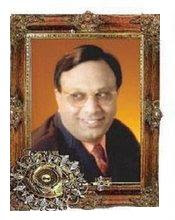
Indian classical dance is a relatively new umbrella term for various codified art forms rooted in Natya, the sacred Hindu musical theatre styles, whose theory can be traced back to the Natya Shastra of Bharata Muni (400 BC). These are:
Dances performed inside the sanctum of the temple according to the rituals were called Agama Nartanam. This was a spiritual dance form.
Dances performed in royal courts to the accompaniment of classical music were called Carnatakam. This was an intellectual art form.
Darbari Aattam form of dance appealed more to the commoners and it educated them about their religion, culture and social life. These dances were performed outside the temple precincts in the courtyards.
For lack of any equivalents in the European culture, the British colonial authorities called any performing art forms found in India as "Indian dance". Even though the art of Natya includes nritta, or dance proper, Natya has never been limited to dancing and includes singing, abhinaya (mime acting). These features are common to all the Indian classical styles.
A very important feature of Indian classical dances is the use of the mudra or hand gestures by the artists as a short-hand sign language to narrate a story and to demonstrate certain concepts such as objects, weather, nature and emotion.
The Sangeet Natak Akademi currently confers classical status on eight Indian dance forms:
Bharatanatyam - Tamil Classical Dance
Odissi - Orissa Classical dance
Kuchipudi - Telugu Classical dance
Manipuri - Manipur Classical Dance
Mohiniaattam - Kerala Classical Dance
Sattriya - Asamese Classical Dance
Kathakali - Malayalam Classical Dance
Kathak - North Indian Classical Dance
Out of the 8 styles, the most ancient ones and the ones that have their origin in Agama Nartanam are Bharatanatyam and Odissi. These two most faithfully adhere to the Natya Shastra.
Kuchipudi and Mohiniaattam are relatively recent Darbari Aatam forms, just as Kathakali, and two eastern Indian styles, Manipuri and Sattriya, that are quite similar. Kathak was influenced in the Mughal period by various other dance forms, including Persian dance
Dances performed inside the sanctum of the temple according to the rituals were called Agama Nartanam. This was a spiritual dance form.
Dances performed in royal courts to the accompaniment of classical music were called Carnatakam. This was an intellectual art form.
Darbari Aattam form of dance appealed more to the commoners and it educated them about their religion, culture and social life. These dances were performed outside the temple precincts in the courtyards.
For lack of any equivalents in the European culture, the British colonial authorities called any performing art forms found in India as "Indian dance". Even though the art of Natya includes nritta, or dance proper, Natya has never been limited to dancing and includes singing, abhinaya (mime acting). These features are common to all the Indian classical styles.
A very important feature of Indian classical dances is the use of the mudra or hand gestures by the artists as a short-hand sign language to narrate a story and to demonstrate certain concepts such as objects, weather, nature and emotion.
The Sangeet Natak Akademi currently confers classical status on eight Indian dance forms:
Bharatanatyam - Tamil Classical Dance
Odissi - Orissa Classical dance
Kuchipudi - Telugu Classical dance
Manipuri - Manipur Classical Dance
Mohiniaattam - Kerala Classical Dance
Sattriya - Asamese Classical Dance
Kathakali - Malayalam Classical Dance
Kathak - North Indian Classical Dance
Out of the 8 styles, the most ancient ones and the ones that have their origin in Agama Nartanam are Bharatanatyam and Odissi. These two most faithfully adhere to the Natya Shastra.
Kuchipudi and Mohiniaattam are relatively recent Darbari Aatam forms, just as Kathakali, and two eastern Indian styles, Manipuri and Sattriya, that are quite similar. Kathak was influenced in the Mughal period by various other dance forms, including Persian dance

No comments:
Post a Comment